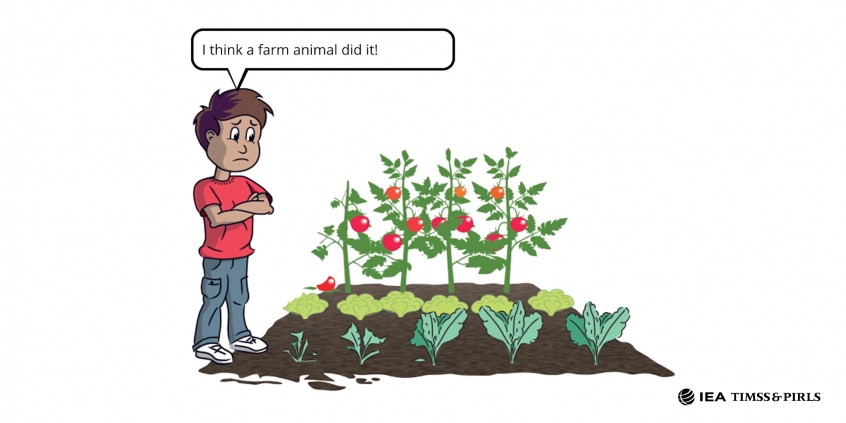eTIMSS opened the door to examining innovative and more efficient assessment of higher-order thinking skills. As well as making the data collection of complex tasks feasible, the digital assessment allowed for the integration of interactive item types and features that capitalize on the digital environment and engage students.
An interactive approach to mathematics and science
Creating engaging, computerized assessment tasks benefitting from the most current research became an explicit TIMSS 2019 development goal. Problem Solving and Inquiry Tasks, or PSIs, were developed by the TIMSS and PIRLS International Study Center at Boston College as visually attractive and interactive items that simulate real-world and laboratory situations and call on students to integrate and apply process skills and content knowledge to solve mathematics problems and conduct scientific experiments and investigations.
Reporting the results
This latest and final release of the TIMSS 2019 publication suite, Findings from the TIMSS 2019 Problem Solving and Inquiry Tasks, is accompanied by the release of the TIMSS 2019 PSI database. Together, the report and the database provide a wealth of data for further research and will enable a series of further in-depth analyses.
TIMSS 2019 included four PSI tasks at fourth grade, two in mathematics and two in science including 50 items, as well as four PSI tasks at eighth grade, two in mathematics and two in science including 55 items. All the eTIMSS countries participated in assessing the PSI tasks, including 30 countries and six benchmarking systems with about 22,000 students at fourth grade, and 22 countries and five benchmarking systems with 20,000 students at eighth grade.
This report presents four of the Problem Solving and Inquiry tasks together with the achievement results across the countries, focusing on the strengths and weaknesses of the tasks themselves:
- School Party—Fourth grade mathematics
Students plan a party for their school, including ticket sales, decorations, food, and drinks.
- Farm Investigation—Fourth grade science
A boy investigates which farm animal ate the plants in his garden.
- Building—Eighth grade mathematics
- Students construct a storage shed with a rain barrel.
- Pepper Plants—Eighth grade science
Students conduct an experiment to determine the most effective fertilizer.
The report provides more comprehensive coverage of problem solving and inquiry while making it possible to collect valuable process data about the ways students proceed through an assessment session. Process data on event time, navigation from screen to screen, scrolling, and the use of calculators and rulers were particularly useful in analyzing non-response data, distinguishing between students who ran out of time and those who stopped responding before time was up.
Assessment formats for the digital age
Digital assessment answers the need of educational systems globally to recognize that students are living, learning, and will be working in a world driven by digital technologies. Students are nowadays using digital tools to improve their writing, solve mathematical problems, and automatically summarize texts, or generate questions. This is the new reality in which assessment of student achievement takes place. PSIs give students the opportunity to show how they can interact with digital environments to solve problems in mathematics and science, while providing teachers and researchers with new and reliable data to assess students’ performance in the digital age.
A digital TIMSS reflects the growing use of digital devices in school and everyday life and leverages technology to assess a new generation of students. The PSI tasks from the 2019 cycle will be further developed and integrated into the design of TIMSS 2023 to further utilize the potential of interactive extended tasks for the assessment of achievement.
For an overview of Findings from the TIMSS 2019 Problem Solving and Inquiry Tasks and examples of PSI tasks used in the assessment, watch the video created by TIMSS & PRILS International Study Center here.
Read the full press release on our website.
For access to the full report, please follow the link below.

